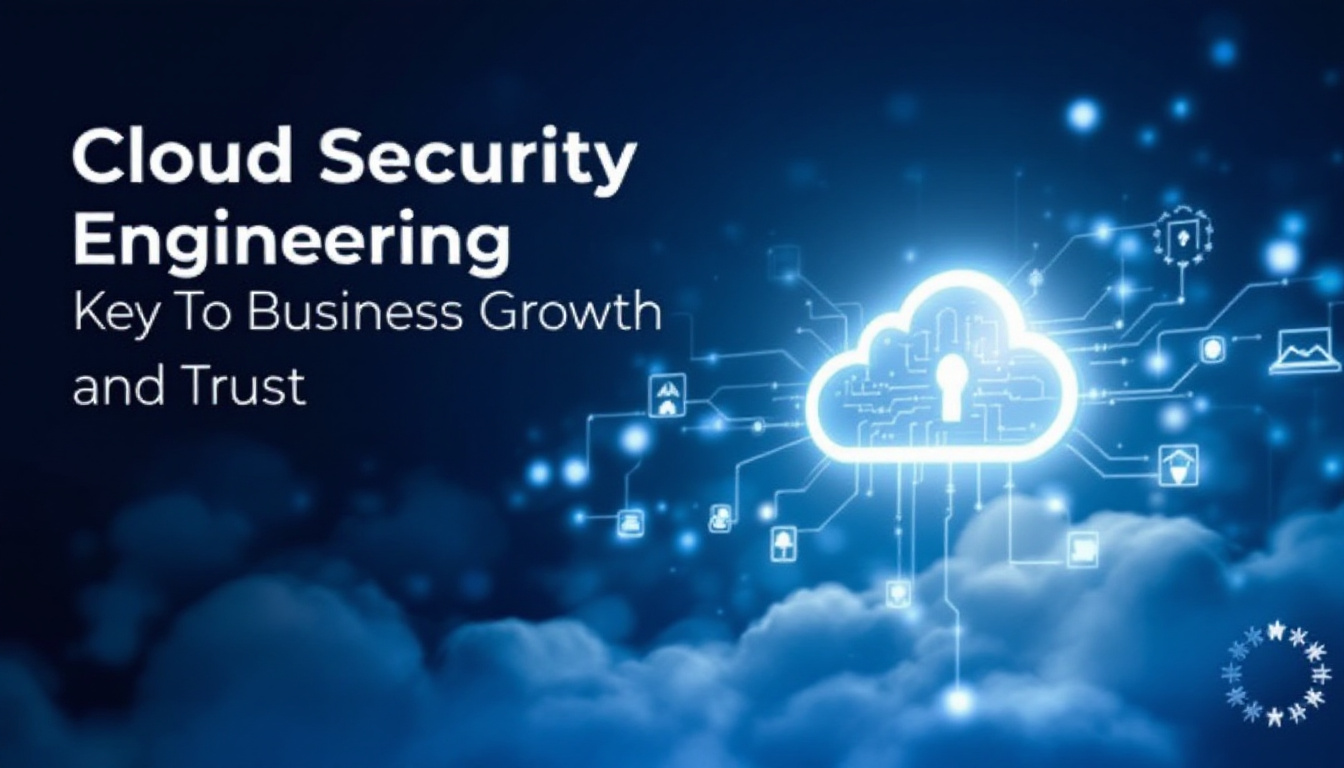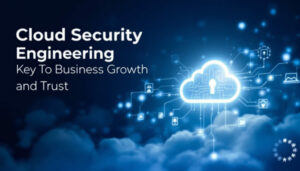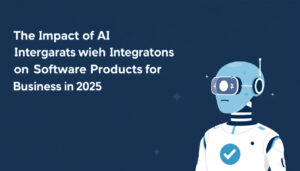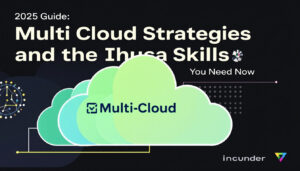Cloud platforms continue to form the backbone of business, development, and technology projects. With this shift comes an increase in exposure to new risks. As attacks grow more sophisticated and regulatory expectations rise, the demand for strong cloud security measures is reaching new heights. “Cloud Security Engineering 2025: Key To Business Growth and Trust”
In 2025, organizations will need to take cloud security engineering seriously to protect sensitive data, support compliance, and maintain operational stability. The combination of evolving digital threats and stricter industry regulations will place security skills at the forefront. Those who pursue rigorous training, such as the Top Cybersecurity Courses for 2025, will be well-positioned to meet these growing challenges
.
The Rapid Acceleration of Cloud Adoption
The past year has revealed a clear trend: companies across every sector have increased their investments in cloud technology. Migration to cloud and broader multi-cloud setups are not new concepts, but their growth rate has sharply accelerated. Organizations, from tech startups to global enterprises, now must weigh not only cost and efficiency but also how to work smarter and faster than their competition. This expanded cloud footprint brings both advantages and new risks—especially as remote work, digital transformation, and AI-powered tools become the norm.
Key Drivers for Organizations Moving to the Cloud
In recent months, organizations have adopted cloud services at record speeds. This migration is motivated by several core factors:
- Scalability: Cloud platforms allow businesses to increase or decrease resources on demand. Rapid changes in markets or seasonal shifts in usage no longer require large upfront hardware investments.
- Reduced Operational Costs: Shifting infrastructure to the cloud often lowers capital expenditure. Pay-as-you-go pricing models and the ability to fine-tune resources help companies control spending, as seen in industry summaries like the Ten Trends That Shaped the Cloud Market in 2024.
- Increased Agility: Teams using cloud solutions deploy new services faster, respond to client needs quicker, and adapt to market changes in near real-time.
- Competitive Advantages: The speed and flexibility provided by the cloud help businesses outpace less agile rivals. Companies taking bold steps into distributed and multi-cloud strategies often set new benchmarks for performance.
This shift also enables organizations to pursue advanced technologies that require high compute power and storage flexibility. For example, AI-powered analytics demand both robust infrastructure and scalable resources. As businesses use AI to uncover insights and optimize operations, cloud adoption becomes inseparable from innovation. The rise in AI-driven analytics is detailed in AI Transforming Business Analytics 2025, showcasing how integrated cloud and AI solutions are setting new standards.
Businesses also discover added value by diversifying across multiple cloud providers. A multi-cloud approach supports improved uptime, regulatory compliance, and workload optimization, outlined in resources like Multi-Cloud: Pros/Cons and Critical Success Factors and Multi Cloud Strategy: Definition, Benefits, & Best Practices.
Remote and hybrid work models have further accelerated these trends. With teams distributed around the globe, secure cloud access is mandatory for productivity and collaboration.
Security Blind Spots During Rapid Cloud Expansion
With this rapid increase in cloud adoption, organizations often face security challenges they did not anticipate. Common vulnerabilities and misconfigurations emerge, sometimes with severe consequences.
Key blind spots include:
- Misconfigured Storage: Frequently, cloud storage buckets and file shares are left open or publicly accessible, leading to accidental data exposure.
- Account and Access Issues: Weak identity and access management lets attackers exploit excessive privileges, orphaned accounts, or unsecured APIs.
- Lack of Visibility: In multi-cloud environments, tracking assets and changes can become complex. This often leads to blind spots in auditing, compliance, or threat detection.
- Unpatched Services: Cloud providers supply security updates, but it remains the organization’s job to maintain configurations and patch vulnerabilities within applications and containers.
- Shadow IT and Unsanctioned Usage: Employees use unauthorized cloud services, bypassing organizational controls and expanding the attack surface.
Organizations adopting cloud at speed can inadvertently introduce security gaps. A lack of cloud-specific security skills only increases the risk. Continuous monitoring, automation, and structured training are critical to address these vulnerabilities. For those seeking to expand their expertise in secure cloud configurations, resources such as the Top Cybersecurity Courses for 2025 help teams stay current with rapidly changing best practices.
Implementing robust governance frameworks and investing in skilled cloud security engineers is now essential to minimize misconfigurations and maintain compliance.
Evolving Threat Landscape and Attack Techniques
The speed at which attackers adapt to new technologies will continue to shape cloud security priorities in 2025. Modern threats are increasingly tailored to cloud environments and exploit both technological and human weaknesses. Threat actors now use persistent, AI-driven tools to bypass defenses and exploit common vulnerabilities. As cloud adoption accelerates, attacks on supply chains, container platforms, and privileged identities grow in both scale and precision. Staying ahead requires understanding where new risks will emerge and how regulatory forces influence defense strategies.
Cloud-Specific Attack Vectors to Watch in 2025
 Photo by Antoni Shkraba Studio
Photo by Antoni Shkraba Studio
Organizations face a wave of cloud-native attack techniques designed to target the expanding digital infrastructure. Recent incidents and forecasts point to several high-priority risks:
- Insecure APIs: Many cloud breaches stem from poor API security. Attackers actively look for misconfigured or unprotected APIs, which can allow unauthorized data access or disruption of services. Developers and security engineers must ensure runtime protection and regular audits for every exposed endpoint.
- Identity Theft and Account Takeover: Identity is the new perimeter in the cloud. Sophisticated phishing schemes and credential stuffing attacks target cloud accounts with high privileges. Once inside, attackers exploit single sign-on (SSO) weaknesses and lateral movement opportunities. Effective identity management and multi-factor authentication (MFA) can reduce these risks.
- Privilege Escalation: Misconfigured role-based access controls (RBAC) let attackers expand their privileges after gaining a foothold. Privilege escalation remains a leading cause of large-scale breaches, often compounded by excessive permissions granted to service accounts.
- Container and Orchestration Vulnerabilities: With widespread adoption of containers and Kubernetes, attackers focus on insecure container images, neglected security patches, and exposed orchestration dashboards. These gaps provide paths for data theft, cryptojacking, or undetected lateral movement.
Sophisticated attack campaigns increasingly blend automation, AI-driven reconnaissance, and persistent access. Notable examples from 2025 include high-profile supply chain attacks against Oracle Cloud and stealthy package repository exploits, such as the PyPI compromise. These incidents show that vulnerabilities in any component—from a third-party service to a container image—can lead to widespread compromise.
The move toward Ransomware-as-a-Service (RaaS) and automated attack kits adds a commercial element to cybercrime. As a result, targeted ransomware, cloud data exfiltration, and service disruptions are expected to rise. Cloud-focused cyber threat intelligence reports show increasing activity from organized groups using these advanced methods (Everything You Need to Know About Cyber Threat Intelligence 2025).
How Regulation and Compliance Shape Security Response
The security response to cloud threats is increasingly shaped by regulatory measures and compliance frameworks, especially as authorities set stricter standards for data protection and breach reporting in cloud environments. With new and updated regulations emerging throughout 2024 and into 2025, companies must adjust their security controls to meet these mandates.
Key developments include:
- Stricter Data Sovereignty Regulations: Many countries now require sensitive data to remain within specific geographic borders. Cloud infrastructure must support clear data residency and legal compliance.
- Updated Compliance Standards: Frameworks such as ISO 27001, SOC 2, and regional guidelines are being enhanced to cover cloud-native risks. Regular third-party audits and continuous compliance checks are becoming standard.
- Mandatory Incident Reporting: Several regions have introduced rules for rapid breach notifications, putting pressure on organizations to enhance monitoring and response procedures.
The increased scrutiny has a direct impact on how companies design their cloud architectures and select security solutions. Security teams must map technical controls to legal requirements and always be prepared for independent assessments and audits.
To stay compliant and competitive, organizations are turning to guided resources and training programs that reflect the latest legal trends. For example, the guide on Top Cybersecurity Courses for 2025 helps engineers and IT staff build practical expertise aligned with current compliance needs.
Security is no longer just an IT function. It is an organizational priority, shaped by outside expectations and frequent regulatory changes. Compliance is both a legal obligation and a catalyst for better risk management, pushing companies to raise the bar for cloud security engineering. Staying informed of emerging cybersecurity threats and up-to-date with compliance frameworks has become a core requirement for all teams working with the cloud.
Best Practices for Proactive Cloud Security Engineering
The strategic approach to cloud security continues to shift from reactive measures to a forward-looking, embedded methodology. Companies with mature cloud programs recognize that traditional perimeter defenses are not enough. To keep ahead, organizations need to build security into every facet of their architecture, from code deployment to infrastructure management. This involves embracing defense-in-depth, automating control points, and constantly adapting team skills to address shifting threats.
Integrating Security into DevOps and CI/CD Pipelines
Strong cloud security begins at the design phase. Security must no longer be a step that comes after development is finished. By embedding security controls directly into DevOps practices and CI/CD pipelines, organizations reduce the time between code delivery and threat detection. The risk of breaches caused by misconfigurations or unpatched code drops significantly.
Key steps to strengthen security within DevOps include:
- Adopting zero trust architecture: Reduce risk by verifying user and workload identities continuously and never trust by default. Explore advanced identity management approaches illustrated in the 2025 Zero Trust Cloud Security Guide.
- Automated security scanning: Integrate tools to scan code, dependencies, and infrastructure-as-code (IaC) configurations on every commit and build. Automation helps developers catch vulnerabilities before production.
- Shift-left testing: Perform security checks early and at every stage, not just before release. This reduces costs and improves response time to new risks.
- Secure Infrastructure as Code: Implement automated checks against IaC templates and ensure compliance with gold standards. For further guidance, see Why Infrastructure as Code Needs to be Secure by Default.
- Continuous monitoring: Detect threats as they happen by placing sensors and alerting within the pipeline. Real-time monitoring complements secure design and strengthens response.

Photo by Brett Sayles
Automation is central to this strategy. By automating code reviews, vulnerability scanning, and deployment checks, teams can focus on building innovative features while maintaining high security standards. As cloud environments scale, the use of policy as code and automated remediation helps reduce manual errors. The benefits of automation, including cost and risk reduction, can be further explored in How Can Automation Cut Security Costs in 2025?.
Integrating such practices into the development cycle supports repeatable, reliable workflows. For organizations seeking to update policies or strengthen governance, it is important to reference industry best practices and adopt frameworks, such as those discussed in Top Threats 2025 | 8 Real-World Cybersecurity Breaches.
Cloud Security Skills and Team Requirements for 2025
As threats grow more specialized and cloud architectures more complex, teams need a new blend of expertise. Security professionals who understand both cloud-native technologies and modern risk management are in strong demand. Organizations will face growing pressure in 2025 to develop or hire individuals skilled in:
- Cloud-native security frameworks: Familiarity with provider-specific tools (such as AWS Security Hub, Azure Security Center, or Google Chronicle) and multi-cloud monitoring solutions.
- DevSecOps principles: Engineers must be comfortable with merging development, security, and operations throughout the life cycle of applications and infrastructure.
- Automation and IaC security: Understanding the secure usage of Terraform, CloudFormation, and their equivalents. Awareness of policy enforcement, drift detection, and automated remediation.
- Zero trust and identity governance: Skills to implement continuous verification, privilege management, and strong authentication within cloud platforms.
- Threat detection and incident response: Ability to employ tools for real-time detection, security analytics, and fast response across cloud assets.
Training does not end with technical upskilling. Teams also need awareness of regulatory changes, cloud governance models, and effective collaboration techniques. To bridge skill gaps, organizations are investing in hands-on training and certifications featured in Best Niche Cybersecurity Training Programs 2025. These programs are matched to emerging requirements, preparing teams for the next stage of cloud growth.
For organizations beginning to map out their skills strategy, it is helpful to structure cloud security roles around areas like architecture, automation, DevSecOps, and compliance. By tracking industry benchmarks and emerging courses, leaders can future-proof their teams and stay ready for new challenges.
Practical, ongoing education will support strong security at scale. As cloud infrastructure, monitoring, and response requirements increase, teams with modern skills and training can adapt faster and implement stronger controls. To deepen knowledge, readers may also want to review additional strategies for talent development at The SpartanE Cloud Security Resource Hub.
Looking Ahead: The Strategic Value of Cloud Security Engineering
Organizations are investing more in cloud security to keep pace with digital change. As automation, regulatory needs, and customer expectations grow, security engineering for the cloud is becoming a cornerstone of business stability and digital growth. The focus no longer sits with only IT or security departments. The advantages touch business continuity, customer trust, and the ability to deliver digital solutions with confidence.

Photo by 𝗛&𝗖𝗢
Business Resilience Through Robust Cloud Security
Cloud security engineering helps create a stable business environment. No matter the industry, a strong security plan protects from disruptions due to cyberattacks or system failures. Business leaders now view strong security as a driver for reliable operations, not just a safety net.
Cloud strategies play a growing role in disaster recovery and business continuity plans. By engineering for security at every step—design, implementation, and management—companies reduce downtime after a breach or system incident. Plans that include multi-cloud strategies and automated defenses now provide essential capabilities for rapid recovery. These methods are detailed further in guides like Cloud Automation Strategies for 2025, which highlight how resilient frameworks can also boost productivity.
Business resilience depends on secure interfaces between IT and business teams. Clear policies, real-time monitoring, and rapid response protocols foster open communication and keep teams focused during unexpected events.
Building Customer Trust in a Digital-First World
Security in the cloud shapes how customers trust an organization. Data breaches and operational outages can damage a brand’s reputation and cause lasting financial impacts. Proactive cloud security engineering builds strong defenses, but also supports transparency and compliance with privacy demands.
Companies able to prove their systems are secure attract new business and help retain loyal customers. Cloud engineers play a direct role in this process by implementing controls, keeping up with regulatory shifts, and responding swiftly to incidents. Brands that publish security reports, follow compliance standards, and show a clear commitment to privacy increase stakeholder confidence.
In sectors with sensitive data—such as finance, health, and retail—trust is a deciding factor. Clear evidence of cloud security practices often becomes a competitive advantage. Detailed guidance on building these defenses is covered in resources like Cloud-Based Digital Products Security in 2025.
Long-term Digital Success: Integrating IT and Business Priorities
Integrating security into every cloud project brings IT and business teams together. Long-term digital growth needs a shared vision for both innovation and risk management. As cloud environments grow, it is key for technical and business leaders to communicate strategy, set shared goals, and plan for both rapid delivery and secure outcomes.
Practical steps for linking security and business goals include:
- Regular meetings between technology and business leads
- Shared planning for digital product rollouts and updates
- Mapping business risks to technical controls in the cloud
- Investing in team education on new threats and regulatory requirements
Technical-business integration creates a cycle of feedback and learning. Companies that invest in these connections are better prepared to introduce new products, adopt new platforms, or react to market change. Insights on this balance can be found in detailed strategy guides such as Webtoon XYZ IT Development Strategies, which address both technical and business planning.
As organizations look further into the future, security engineering for the cloud will continue to influence who succeeds in digital markets. The most resilient and trusted companies will be those that place security at the heart of their collaboration between IT and business.
Conclusion
The growing demands of cloud adoption and the rise in specialized attacks demonstrate why cloud security engineering will only increase in importance next year. Staying current with new threats and regulatory updates is no longer optional—these elements now directly shape the security posture and operational strength of organizations.
Teams that invest in advanced skills, reliable governance, and strong technical controls are best positioned to respond to future challenges. Exploring focused training programs and reviewing practical strategies, such as the guidance offered in Digital Products for Software Developers 2025, can help organizations prepare their staff and infrastructure for what’s ahead.
Continued attention to both technical detail and compliance allows companies to not only protect assets but also build a foundation for trust and business growth. Thank you for reading—consider sharing your experience or thoughts below, and review linked resources to further strengthen your organization’s cloud security strategy for 2025.









